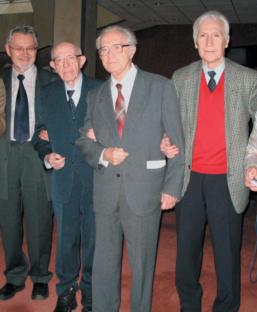A Long-liver and a Knight of Science. To the 100th Anniversary of B. I. Khodorov
Abstract—
An outstanding neurophysiologist Boris Israelievich Khodorov made an enormous contribution to the study of excitable biological membranes, to the biophysics and physiology of the nervous system. Several generations of biophysicists, physiologists, and neurobiologists learned from his monographs and textbooks. Together with his students and colleagues, he created high-quality electrophysiological facilities for recording of electrical signals in the Ranvier node of isolated nerve fibers and also developed other original experimental models for studying the excitability of ion channels. Using these models, the mechanisms of action of various anesthetics and other substances on the generation of action potentials were investigated. The parameters of activation and inactivation of sodium currents were analyzed using mathematical models, primarily the Hodgkin–Huxley equations. The results of these studies have been included in textbooks, books and manuals on biophysics and physiology of the nervous system. The assumptions made in the early works of B.I. Khodorov that local anesthetics and antiarrhythmic drugs pass to the pore of the ion channel through the hydrophobic pathway of the lipid membrane received convincing confirmation and evidence half a century later, after obtaining the crystal structure of the sodium channel in 2011. Pioneering studies of B.I. Khodorov on the dysregulation of calcium homeostasis of brain neurons during glutamate receptor hyperstimulation, as well as elucidating the role of mitochondria in brain cell neurotoxicity, received wide international recognition. The article provides details of the life and scientific achievements of this outstanding scientist.


 求助内容:
求助内容: 应助结果提醒方式:
应助结果提醒方式:


